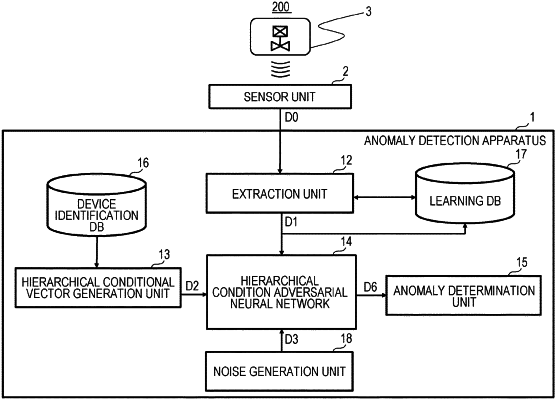| CPC G10L 15/20 (2013.01) [G05B 23/024 (2013.01); G06N 3/08 (2013.01); G10L 15/02 (2013.01); G10L 17/18 (2013.01); G10L 2025/783 (2013.01)] | 11 Claims |

|
1. An anomaly detection apparatus comprising:
a device identification database that stores device identification information for identifying a specific device for each type of a device;
one or more processors and one or more non-transitory computer-readable storage media, the non-transitory computer-readable storage media having stored thereon at least:
a hierarchical conditional vector generation unit that generates a hierarchical conditional vector based on the device identification information;
an extraction unit that extracts a target device feature amount vector indicating a feature amount of an acoustic signal acquired from a target device by analyzing the acoustic signal;
a hierarchical condition adversarial neural network that performs background noise determination for determining a background noise level of a surrounding environment of the target device by analyzing the hierarchical conditional vector and the target device feature amount vector, and generates background noise level information indicating the determined background noise level;
a noise generation unit that generates a noise signal and noise vector based on the noise signal, the noise vector being input to the hierarchical condition adversarial neural network; and
an anomaly determination unit that determines whether an anomaly exists in the target device feature amount vector by using at least an anomaly determination threshold selected according to the background noise level.
|